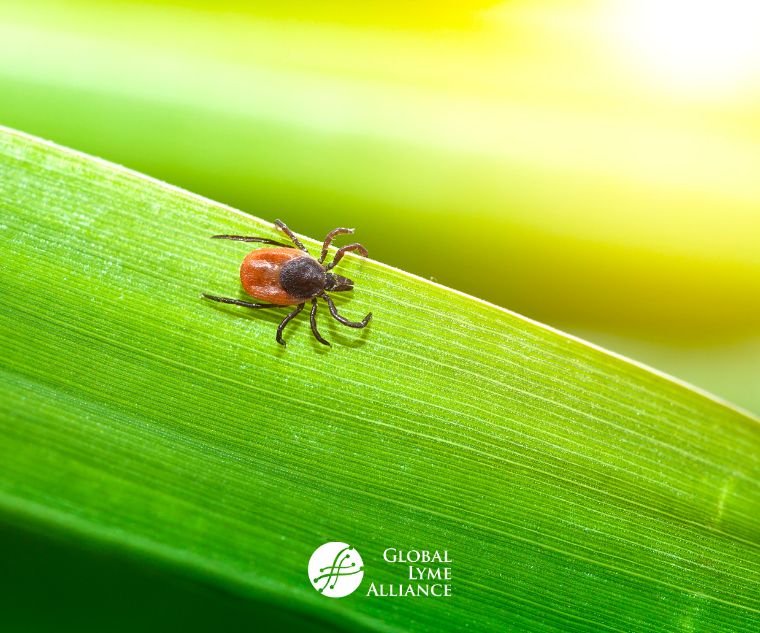
The leading Lyme disease nonprofit uses the month of May to educate the public, highlight initiatives, and help prevent Lyme and other tick-borne diseases.
STAMFORD, CT, UNITED STATES, May 2, 2023/EINPresswire.com/ -- Efforts are underway to bring awareness to the growing problem of ticks and the various diseases they carry during May, National Lyme Disease Awareness Month. May through August is the peak season for contracting tick-borne illnesses. Ticks are becoming more active each year, even beyond peak season, and they are expanding their geographical footprint.
There is an urgent need for greater awareness, better testing, and treatment options to support the millions living with this devastating illness worldwide.” — Laura MacNeill, CEO of Global Lyme Alliance
Here are four important facts to know about Lyme disease during Lyme Awareness Month and beyond:
1. Spending time outdoors increases risk.
Lyme disease is the most common vector-borne disease in the US. It has been reported in all 50 states and more than 80 countries. According to the CDC (Centers for Disease Control), half a million people are diagnosed with Lyme each year, a 59% jump from the previous CDC estimate.[i]
2. Children and pets are at high-risk for Lyme disease.
Pets can bring ticks into homes, putting families in danger, while children aged 3-14 have the highest chance of getting Lyme disease. What's worse, most pediatric Lyme cases are missed, which can be tragic. It can take years of misdiagnoses and misunderstandings before parents know what's wrong with their child. The long-term effects of going undiagnosed can lead to chronic illness and even neuropsychiatric complications. Learn more about the stages and symptoms of Lyme disease.
3. Diagnosis and treatment can be complicated.
Lyme disease testing is notoriously faulty, with current diagnostics missing up to 60% of early-stage Lyme disease cases, since it only can detect antibodies against Borrelia burgdorferi (the bacteria that causes Lyme disease), not the bacteria itself. [ii] Patients who suffer either get misdiagnosed or not diagnosed at all. Lyme disease can progress to more complex, and systemic stages if undiagnosed. It then becomes even more challenging to treat, especially if the patient has other co-infections as well. Co-infections require different treatments, and many doctors don’t test for them in addition to Lyme disease, so it's essential to keep this in mind. With a Lyme disease diagnosis, consider testing for other tick-borne diseases.
4. If not treated early, Lyme disease can become seriously debilitating.
Lyme disease affects the skin, joints, heart, eyes, and nervous systems including the brain and peripheral nerves. With a positive test, prompt treatment can be successful for about 80% of people. But if not diagnosed or treated early, Lyme can develop into a chronic illness. In addition, for people who get swift treatment, research shows that 20% of them continue to experience debilitating symptoms. [iii] There are no uniformly accepted or validated treatment options for patients beyond the standard course of antibiotics. The lack of a clear path for treatment at this stage causes significant stress, financial burden, and more. A recent GLA-funded study linked Lyme disease to psychiatric disorders. Of the study’s results, Lead Investigator Dr. Michael Benros says, “Treating clinicians and patients should be aware of an increased risk of mental health problems, particularly the first year after a severe Lyme disease infection, and if mental health issues arise, patients should seek relevant treatment and guidance.”
Global Lyme Alliance (GLA) CEO Laura MacNeill provides perspective on the complexity of Lyme disease, "On one side, you have millions suffering from debilitating symptoms, unable to get the help they need, with insurance companies not covering treatment. On the other side, large organizations like IDSA and the CDC maintain that Lyme disease is ‘easy to diagnose and easy to treat.’ They have dismissed the persistence of symptoms over time, even for those who still suffer after treatment. It's no wonder so many are incognizant of Lyme."
There is an urgent need for greater awareness, better testing, and treatment options to support the millions living with this devastating illness worldwide. Research supported by Global Lyme Alliance provides answers to these complex problems while spreading awareness and helping patients.
Conducting daily tick checks is essential to prevention. Visit GLA's betickaware.org for five easy steps to prevent a tick bite and what to do if you find a tick attached.
#######
About Global Lyme Alliance:
The mission of Global Lyme Alliance is to cure Lyme and other tick-borne diseases through innovative research, awareness, and empowering the patient voice. GLA has gained national prominence for funding some of the most urgent and promising research in the field by awarding over $16 million to our research program to date. GLA supports patients through every step in their journey, from finding a Lyme-treating physician to a peer-to-peer mentor program and a wealth of resources and information on its website. GLA also offers an ambassador program for volunteers to raise awareness through education, create fundraising events in their area, or collaborate to advance GLA's mission. Visit us on social media or learn more at GLA.org.
References:
[i] https://www.cdc.gov/lyme/stats/humancases.html, https://www.bayarealyme.org/about-lyme/lyme-disease-facts-statistics/
[ii]https://www.lymedisease.org/lyme-sci-testing/, https://www.dovepress.com/commercial-test-kits-for-detection-of-lyme-borreliosis-a-meta-analysis-peer-reviewed-fulltext-article-IJGM
[iii] https://www.healthline.com/health/lyme-disease-chronic-persistent,
https://med.stanford.edu/news/all-news/2020/03/potential-treatment-for-lingering-lyme-disease.html
Click below to sign up for GLA's newsletter.
The above material is provided for information purposes only. The material (a) is not nor should be considered, or used as a substitute for, medical advice, diagnosis, or treatment, nor (b) does it necessarily represent endorsement by or an official position of Global Lyme Alliance, Inc. or any of its directors, officers, advisors or volunteers. Advice on the testing, treatment or care of an individual patient should be obtained through consultation with a physician who has examined that patient or is familiar with that patient’s medical history.







-2.jpg)
